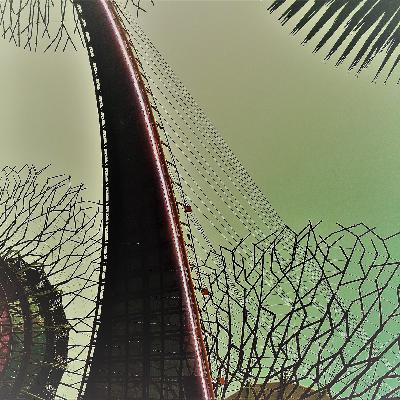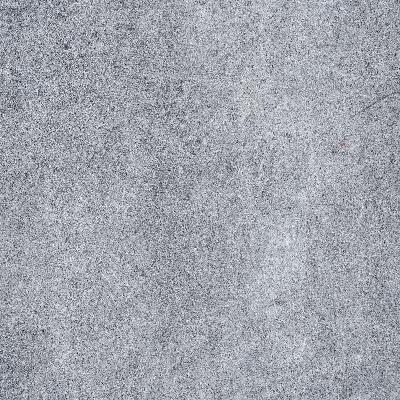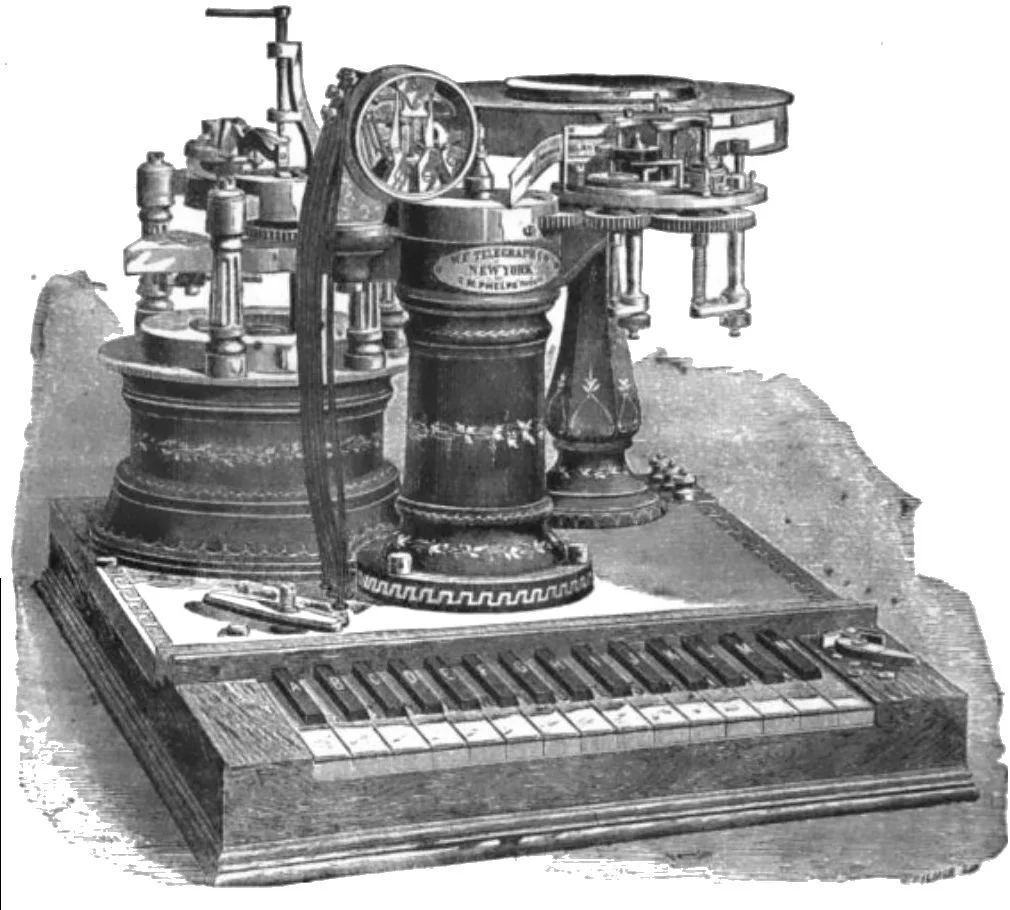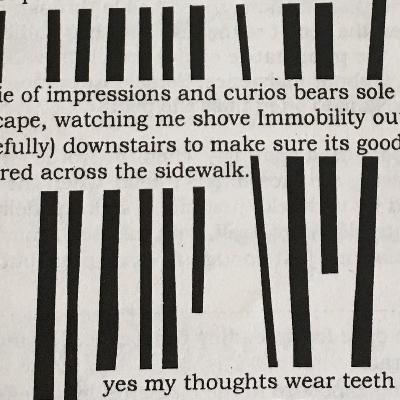Samples from Anodyne - "The thing with beginnings..."
Description
sqs-block-image-figure
intrinsic
">

</figure>
or·i·gin
ˈôrəjən/
noun
1.
the point or place where something begins, arises, or is derived.
Text Extracts:
Garrett Tiedemann: The thing with beginnings is that once you've started, it sometimes becomes clear that you're already in the middle. That you started a million and a half times already and you're actually drawing conclusions that you must be in the proximity of some other ending.
Garrett (on phone): Were there any sort of huge influences on how you approached the method? Either within zine [mispronounced] writers or outside in literature, audio, that sort of thing.
Julie Shapiro: I have to say I find it so interesting that you call them zines and not zines [like magazine]. Is this like a...maybe it's a divide of like who did it when?
Garrett: Well, so, I did not learn of these things until sort of after the fact. So things like the pronunciations are not part of my cultural upbringing.
Julie: It doesn't look like zine, it looks like zine. Sure.
Garrett: So, this is partly also like, in a selfish way, this is me learning through you a particular version of this development in the late 90s. Things like that.
Julie: Yeah. Well think of, I mean it was zine because they were like kind of like magazines. I mean that's how I always thought of it.
Allyson McCabe: You know there's a way in which your personal experience has a broader public point. You know that's why people, that's why there can be sites where people digitize these mix tapes and share them and even if I don't know either party, the party who made it or the party who it was made for, I can still relate to the emotions. And I feel that that carries over to the idea of a zine. You know a zine could have one, it could have an audience of one. It could have an audience of many more than one. But, the sweet spot I think is the idea where it feels a little bit exclusive, a little bit underground, a little bit like not everybody knows about this thing and that's what makes it kind of fun.
Julie: I mean I always have done this, well to state the obvious not by myself because it's completely about other people, but I've never collaborated with someone in making it, beyond the signs you know, so it's funny because I was thinking, you know I had decided not to go into audio with it at all like firmly, I'm not interested in that for this. I wanted something outside of that part of my life through this. But that ,I was actually really intrigued by the idea of someone else doing it. So, it was really interesting when you reached out with this idea of could you, you know, could you sonifi some of these ideas and some of the signs that come back beyond just reading them and you know what's the sonic interpretation of the message people are sending. Messages people are sending.
[Intro Break]
Garrett: Samples from Anodyne. Don't let the fascists tell you what to do.
Julie: Anodyne had a lot. It had like, was like...
Allyson: There's this great quote from Virginia Woolf and she says partially in writing a letter to someone you're trying to give back a reflection of them. I mean that's kind of a paraphrase, but... In writing a letter you want to give a reflection back to that person of who they are. I mean, I think that's an amazing thing.
Julie: The centerfold was always like a woman hero. One was like Harriet the Spy in the cover of that book. One was Connie Francis because I kept finding Connie Francis records at the thrift store. One was like this amazing postcard. It was like a chainsaw advertisement and had this like 50s woman sitting on a like bright red chainsaw with like a beautiful display of colorful chainsaws behind her, sort of menacing, but except it was actually just an advertisement. Strong, strong woman wielding wielding a chainsaw. But, yeah, I think I'm just trying to remember like as the riot grrrl stuff came and my sense of feminism was growing as well. You know how that was expressed through a more cultural lens and a sort of fun and sometimes ironic lens as well.
People are drawn to a community vibe and then feel more welcome and then become part and then pull others in.
Garrett: When nothing is done, nothing is left undone. Last night I dreamed I was in hell and now I'm having trouble making a list of things to blow up. I didn't realize I was in hell until I got out of bed, Julie the sixties glasses wanted to be hear about it. Instead I gave her another piece of metal I found inside a dumpster in an alley.
Orson Welles (archive tape): It's true. It's a good story though.
Miyuki Jokiranta: Ah, how did you first become aware of Julie's zine?
Tania Ketenjian: I didn't know that she had done the zine in the past and so...You know it doesn't surprise me that she has. But, yeah, I didn't know and I thought Gosh how does she find the time to do it.
Allyson: Really only vaguely. I think it was described in a social media post as a redux of the zine. You know, so I kind of worked my way back and then I found out more about what she was doing before and making those connections.
Simon Roche: She sent me a letter, I guess some time a year ago maybe, and in it was one of these little cards with the little kids on it, holding up their blank card, and I was like OK and she just said will you fill this in I've got a collection of them that I keep online.
Whitney Henry-Lester: Probably. I think she had a pin pinned tweet on Twitter that said something, I'm resurrecting my zine and I didn't know about the original zine, but it sounded like something that Julie would do.
Angeline Gragásin: I encountered her zine at an event at Kickstarter last October. I saw the zine before I knew who Julie was. She had already distributed several copies. They were kind of strewn about the space like amongst the snacks.
Julie: Is actually the origin story, so I came upon this image of these two kids holding up the sign in like a 1950s health book and so I whited out what was in their sign, it was like tips for good health, and I just, it was blank, and I thought like well here's a blank canvas to just invite people to you know speak up about what they're thinking about. So, it was very like of the time, of the DIY, of the like give people a voice you know kind of, I think of it a little bit like pre-status updates. You know it was kind of the analogue version of just speaking your mind and sharing it with the public.
Allyson: You want to make it as organic as possible. It's not like you're taking your brand new pair of jeans and deciding to you know drive over it 100 times in your driveways so they look distressed. You actually want it to be distressed. I think that there is a kind of sincerity even in that construction when you're putting these things together.
Julie: So, I was actually, I was in college in Colorado in Boulder and I actually started getting into mail art, like postal mail art, M-A-I-L, and this was right also around the time I was working in a record store and I was really getting into the kind of riot grrrl music movement.
[brief riot grrrl interlude]
Julie: Just a lot of DIY energy around. And I started morphing my kind of mail art, which was basically just make stuff and send it out to people who would make stuff and send it back.
Garrett: Join us, we're donating our bodies to automobile crash tests.
Stop the slogan. X-ray-o-matic.
Allyson: You know that feel real. You know that the flaws are what make them human. I think there's something about listening to some podcasts you know and some looking at some zines; any kind of homemade media that people realize that there is a person behind this and their trace is part of what's happening and that's kind of what makes it appealing. I don't have to necessarily look at zine and go oh you know who's is this or be able to tell you know that looks like a so and so. But, what I can get out of is the idea that some human person or group of people made this and they took the time to put this all together and it feels to me a lot more satisfying than a glossy magazine that maybe you know has recycled the same stories over and over again or is just chasing what's happening right now.
Julie: There was a really thriving underground of mail art; international actually. So, there were probably five or six dozen people who I would occasionally trade mail art with, but then because it was happening at a time where a lot of young girls were kind of speaking up and supporting each other. That became something I wanted to do more of and have more of an editorial kind of narrative input on I think although I'm sure I wasn't thinking of it in those terms so I'm putting that back on it now. I also was really into like a lot of kitsch and I was a thrifter and I collected















